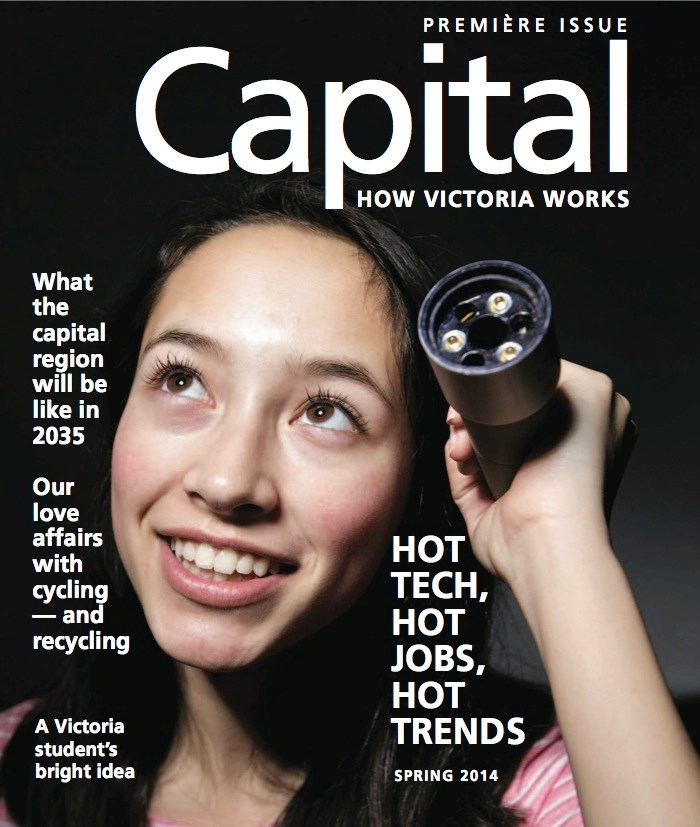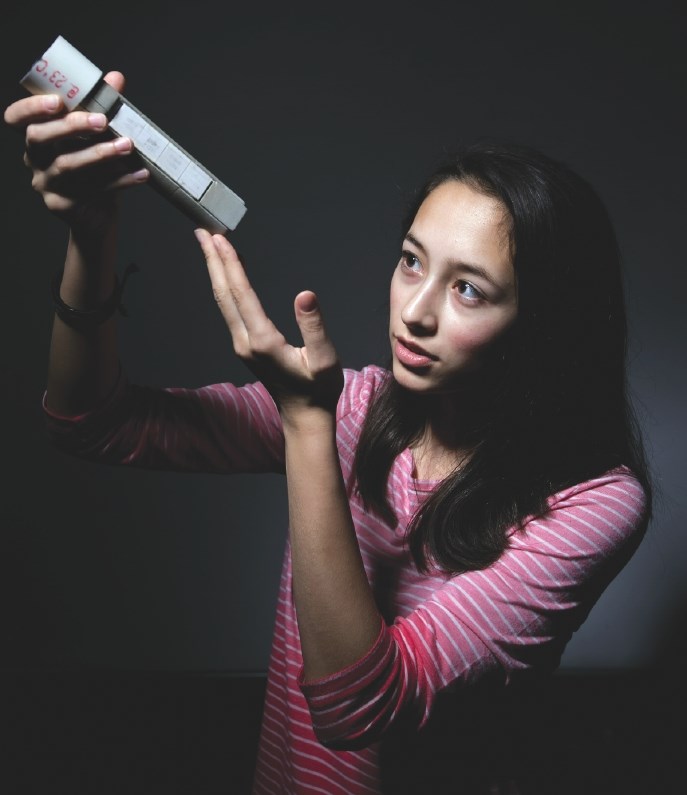Ann Makosinski has come up with something that can literally bring light to some of the darkest corners of the planet and could change the game of power generation forever.
Not bad for a 16-year-old Saanich kid.
But the Grade 11 St. Michaels University School student is not content to rest on her invention of a flashlight powered by body heat — even if that achievement won the 15-to-16-year-old category at Google’s 2013 international science fair and led to her being named one of Time magazine’s 30 people under 30 who are changing the world.
A reluctant spokesperson for anyone other than herself — she bristles at being considered a voice for her generation — the savvy, confident and well-spoken young woman appreciates the platform the attention has given her.
 |
|
Click on the cover to |
“The thing I am most proud of is I’ve brought attention to the fact that over 1.5 billion people still don’t have electricity and my flashlight is a possible way, maybe in the long-term future, to help some of these people,” she says.
Makosinski’s “Hollow Flashlight” has no moving parts or batteries. It does not use toxic chemicals or kinetic energy; it uses Peltier tiles that produce electricity when one side of the tile is heated and the other is cooled to power an LED light.
Her inspiration for the invention came from seeing discarded batteries and after visits to the Philippines. A friend living there failed school courses because of a lack of electricity and light limited when she could study.
Makosinski knows that problem is widespread. And with power, resource extraction and energy top of mind for many, she is keenly aware she has an opportunity to drive home the message of alternatives to fossil fuels.
“One of the main problems we have and we are having is the lack of energy. We are polluting the Earth burning [fuel] and creating these carbon emissions,” she says. “I think this is the future, looking into natural ways we can harvest electricity.”
While reluctant to offer pointers to policy-makers, Makosinski suggests they need to consider alternative energy sources, including the human body. “The body has so much potential, though I’m sure people already realize that,” she says. “After all, we are described as 100-watt walking lightbulbs.”
While the human body may indeed generate as much heat energy as a 100-watt lightbulb, Makosinski has yet to turn her full attention and energy to what’s next.
She hasn’t yet decided what she wants to do after high school, though she intends to continue exploring the human body as a source of energy. She is working to improve the design and brightness of her flashlight and has signed a confidentiality agreement with a company to work on its application.
“I am definitely looking at getting into the sciences and possibly a career in energy harvesting, but I’m not sure exactly. I do want to help people and use things other people wouldn’t expect and see how I can use them in a different way to benefit humanity,” she says, adding with a groan that she probably sounded “cheesy” when she said that.
“This has all brought to mind how fortunate we are. We take for granted that whenever we flip a light switch or plug in a charger or press the remote for the TV it’s going to work.”
